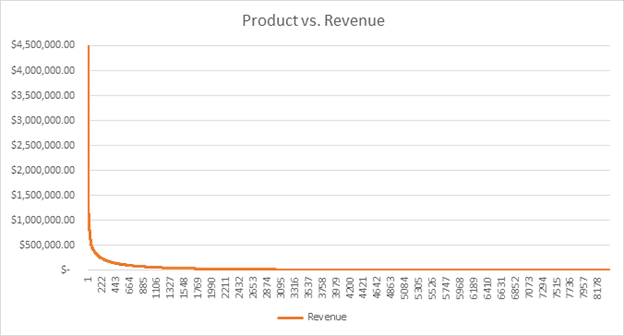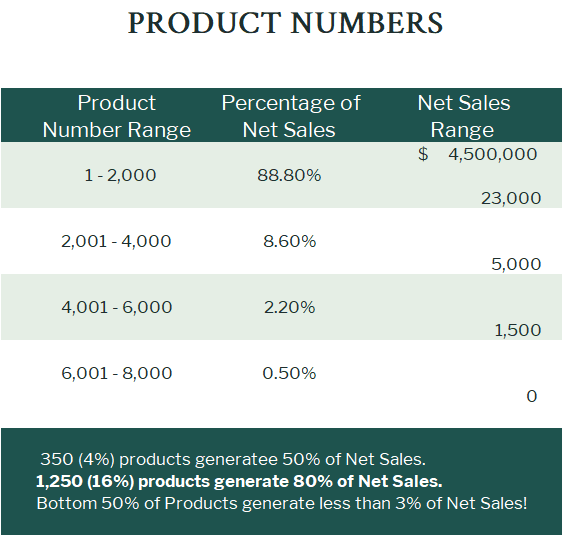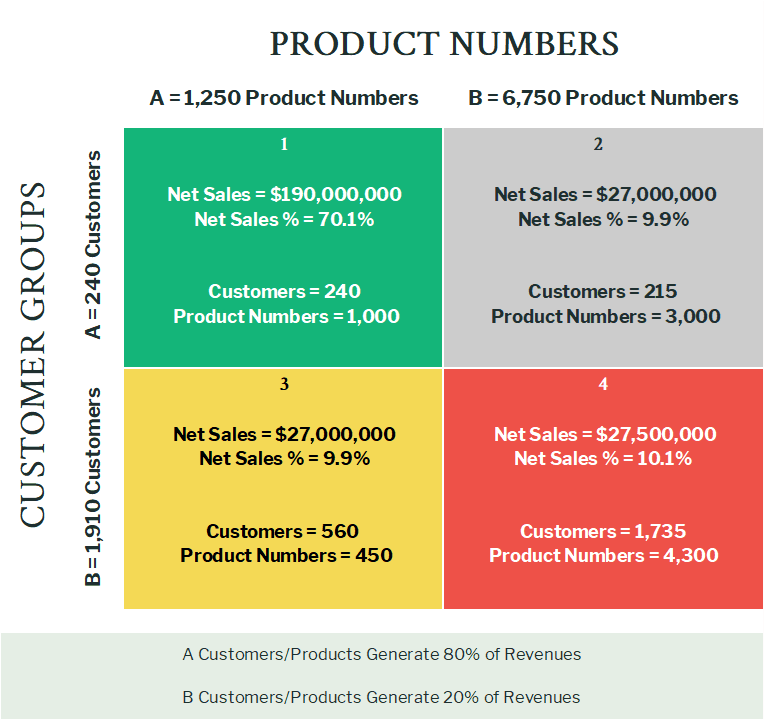
Simplification Drives Profitability
The topic of product rationalization is hotly debated and widely discussed right now. Many companies face having a long tail of products that add virtually no value, and actually steal profits from a company.

The topic of product rationalization is hotly debated and widely discussed right now. Many companies face having a long tail of products that add virtually no value and actually steal profits from a company. As such, companies start to cut away at the tail and reduce the number of products. Then, leaders are surprised at the lack of increased profits and may back off the strategy when they start to hear customer complaints.
At Strategex, we certainly advise our clients to “Simplify and Rationalize” their product line, but we strongly recommend that they don’t do it in a vacuum. Prior to engaging us, business leaders look at a graph like the one below and rightly say, “We have a product proliferation problem!”

Too often, companies cut products without regard for which customers are buying the product. This is a common problem and product proliferation is universal. Strategex addresses the product problem differently: we utilize 80/20 (The Pareto Principle) as a way to understand the customer and product data.
We typically see that the top 25% of products generate almost 90% of a company’s revenues! Conversely, the bottom 50% of products generate less than 3% of revenues! It is critical that companies don’t act on this information alone; some of their top customers may purchase some of the products in the lower half of products. If they slash these products, they could risk the business of some top clients.

The chart above represents the value of each quarter of the products a company sells. In this example, each of the products in the bottom 50% sold less than $5,000 in a 12-month period. We use these charts like a thermometer: they tell us we have a fever, but they don’t diagnose the problem or prescribe a remedy. To do this, companies must take into consideration the relationship between products and customers. At Strategex, we create a quad chart that takes these relationships into account and then develop strategies for each relationship.

Companies must take into consideration the relationship between products and customers. Companies must understand which products are strategic (those that support our top customers) and those that are not.
1. Do not tackle product rationalization without completely understanding who buys what.
2. There are many ways to simplify the product (we’ve identified seven common ways), and eliminating the product is only one of those ways.
3. Communicate, communicate, communicate. This process needs to be communicated internally and to customers in a professional manner that helps everyone understand why we are tackling this endeavor and what the options are.
4. If you take out products with revenue, you must also take cost out of your business.
5. Cross-functional teams should be used. If sales tackles this alone, you may end up with more products. If operations tackles it alone, you’ll likely end up with too few products.
6. You must be resolute. Many, many low-volume customers will complain and scream. You must ask who is complaining and does it matter?
7. Create stories and reasons for each product simplified for communication to customers. We must have a compelling reason and alternative when the customer calls.
In the end, this should not be viewed as a “cutting activity.” This should be viewed as an on-going process that allows us to remove complexity so that we can focus on profitable market share growth. We remove the complexity to free up time and resources to work on what really matters. When done correctly, we’ve seen profits double or triple and top lines grow 20-30%. At Strategex, we’ve helped clients grow their bottom line (and ultimately their top line) through a holistic process that simplifies everything in an organization.

REVENUE GENERATION
90%
We typically see that the top 25% of products generate almost 90% of a company’s revenues! Conversely, the bottom 50% of products generate less than 3% of revenues!

Contact us to see how we can help your business today.
Never miss a beat. Get our latest insights in your inbox.
